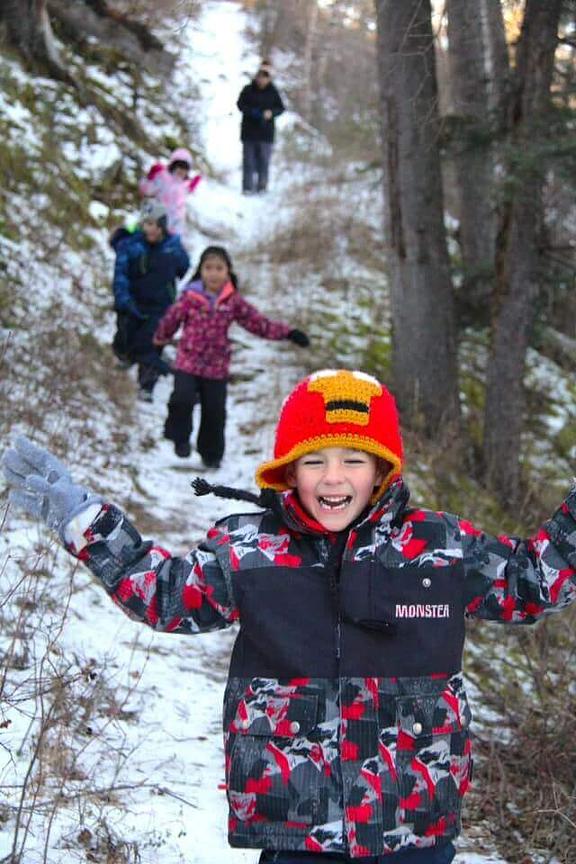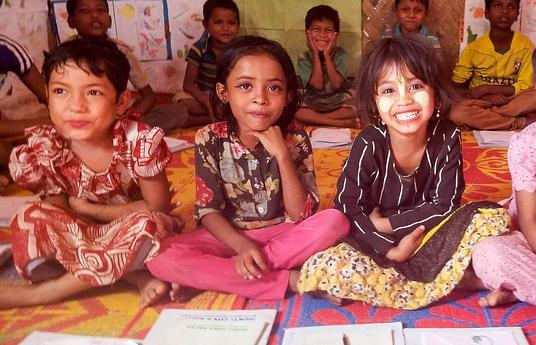We created Fire Fridays as an extension of our play-based experiential learning model to get students outside to learn curricular outcomes on and with the land. In addition to curricular outcomes, we wanted to find a way to develop relationships, improve culture, and build community. It is a targeted intervention to include more indigenous ways of knowing for our First Nations student population
In the beginning, we started Fire Fridays with two project groups (a grade 1 and a grade 6/7 split). They each went out onto our school playground every Friday, with their homeroom teacher and our project lead teacher, to work on curricular outcomes. We build a fire and we always begin around the fire with what the learning is going to be for the afternoon. Our program has now evolved to include other homerooms in our school as teachers are eager to jump onboard. Currently, we are now travelling with two different homerooms every Friday for the entire day to a city run park that is located in the forest near our community. This forested park area is ideal as it has washroom facilities, firepits, warm-up shelters, access to water, and lots of room. As mentioned earlier, when the students arrive at Forest/Fire Fridays we start around the fire. The students then move on to planned curricular activities, with time built in for exploratory play.
The project groups we started with were selected because the homeroom teachers were eager to participate in Fire Fridays. These two groups were the only groups for the first five months. Once the other homeroom teachers started seeing the learning, behavioral, and relationship benefits, they also wanted to participate in Fire Fridays. As we have just started with this program, the main achievement to date was onboarding those reluctant teachers. Now that all our teachers are on board, our goal for the next year or two will be to increase the amount of groups and time focused on Fire Fridays. For example, we hope to expand from 2 groups to 4 or 5 groups we take out to Forest Fridays or have the program over multiple days, not just Friday.
The beauty of this program is it can be scaled to fit your local context. The most important aspect is the fire itself, so you will need a firepit or fire container that can be the central focus of your program. I would start small with one or two groups and focus on experiential curricular outcomes/activities you can do outside around the fire or with the fire itself.



